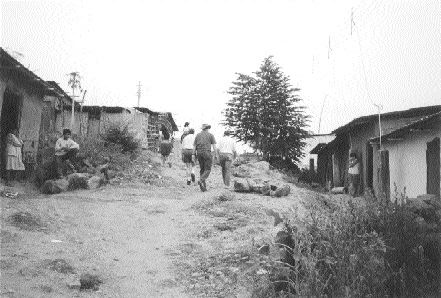Lima, Peru — Judging by the figures, Peruvians should feel real affection for their mining industry. The sector provides tens of thousands of jobs, generated more than US$6 billion in exports last year and should bring in more than US$250 million in special taxes and royalties this year, at least a quarter more than in 2004.
Mining has been one of the country’s fastest-growing industries since 1990 and has transformed itself from a collection of small, government- and family-owned pits into one of the world’s biggest producers of all major metals, including gold.
But just as more money flows in and Peru’s production increases, so do the protests and demonstrations become ever more violent. With presidential elections less than a year away, many fear the protests will only worsen as peasants in mining regions whip up chaos to pressure politicians to attend to their needs.
“There’s a sense that mining companies don’t invest in Peru like they do in other countries and it feels like an injustice,” says Marco La Rosa Sanchez, a lawmaker for the provincial Huaraz government in the central Andes, home to copper and zinc mine Antamina [owned by
In one extreme case, residents of La Oroya, a mining town in the central Andes, are exposed to sulphur and lead poisoning because the Doe Run smelter has postponed its investments in an acid plant there, non-governmental organizations say.
BHP Billiton, meanwhile, was forced to temporarily close its Tintaya copper mine in central Peru for a month at the end of May, losing more than US$10 million in sales, when some 3,000 poor farmers broke into, and vandalized, the open pit in an effort to demand more investment in the neighbouring Espinar region. The incident was perhaps the lowest point in two years of anti-mining protests that also led
But the problem runs deeper than just money. Officials concede that successive governments share the blame. People in the central Cerro de Pasco region, the heart of Peru’s tin, iron and copper output for a century, still do not have proper drinking water, while rural electrification in the Cajamarca province, where Peru’s northern gold belt is located, is the lowest in the country.
Basic sanitation, hospitals, roads and schools are all lacking in the remote regions where metals are often found. The arrival of a major mining company creates a lot of expectation, as residents hope it will fill the vacuum left by the state. In the past, state-run mining companies have also been big polluters and confiscated land for mines, awarding only minimum compensation to farmers, generating resentment.
“There’s perhaps a lack of initiative on the part of the mining companies to have not recognized this from the start and to have not acted with more determination and creativity,” says Luis Bravo, head of mining analysis at Lima-based brokerage Centura.
The protests, while rarely improving life for the communities, are taking their toll on Peru’s mining industry. Investment in mining is expected to fall to US$150 million this year from US$200 million last year, according to government estimates, while Canada’s Fraser Institute ranks Peru as a less attractive place to do business than it was a few years ago. Mines, both big and small, regularly report protests and demonstrations, and companies are continually looking over their shoulders to see who will be the next target.
Establishing good relations with local communities has become an essential task. The viability of
Peru’s biggest challenge now is how to respond to the growing anti-mining sentiment, but no one is agreed on a solution. “The problem is not that there’s not enough money for mining communities, but how to spend the money there is,” says Carlos del Solar, head of Peru’s National Society of Mining, Petroleum and Energy.
“Municipalities need to have projects to receive money, but they don’t have them,” he adds. Del Solar says that Antamina in 2002 made a US$112-million payment for Huaraz province and to date, only US$25 million has been spent.
But town halls across Peru say they have plenty of plans for hospitals, sewage networks and schools, and blame a jealous central government for not wanting to release funds. In turn, government ministers are too ready to blame the protests on vague groups such as “terrorists and drug traffickers” rather than to confront the real problem behind the protests, which is poverty.
There is some hope, however.
“We don’t want to be caught in a political sandwich where different groups try to manipulate the communities against us for their own gain,” Raul Farfan, head of Xstrata Peru’s community relations, recently told a meeting of mining engineers in Lima.
Britain’s
“We hope to be a role model because we honestly believe the correct procedure is to involve as many of the stake holders as possible,” says Ray Angus, Monterrico’s chief operating officer.
Still, next year’s April elections will be a real test for mining companies’ powers of negotiation. Peru’s Economy Minister Pedro Pablo Kuczysnki has set the tone by calling on miners to invest more in the regions where they operate, playing to the gallery of millions of poor Peruvians desperate for a better standard of living.
Miners will need to develop their own defence to show that, as in the case of BHP Billiton’s Tintaya, they do spend hundreds of thousands of dollars on community works, to avoid more protests. They will also need to show investors they have the savvy to work in a high-risk, complex environment if they are to prevent their share prices from falling.
— The author is a freelance writer based in Lima, Peru.


Be the first to comment on "Anti-mining protests grow in Peru"